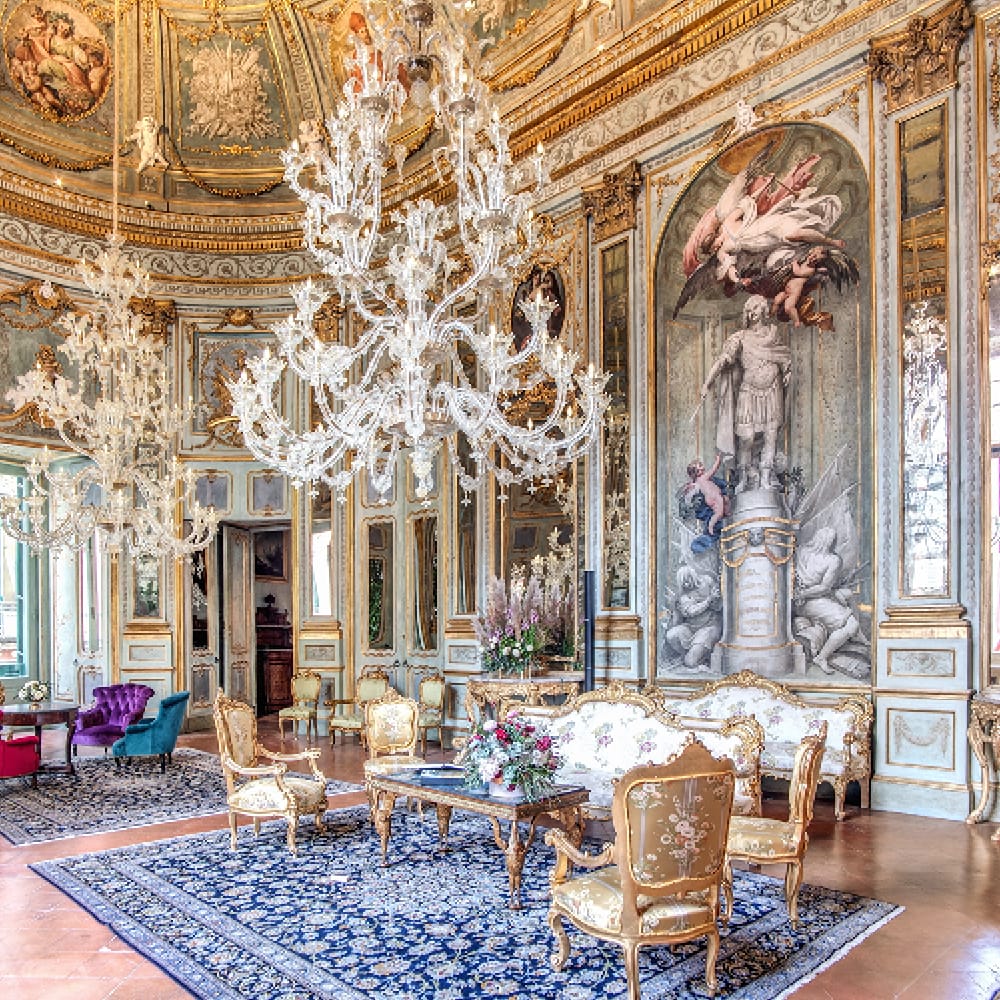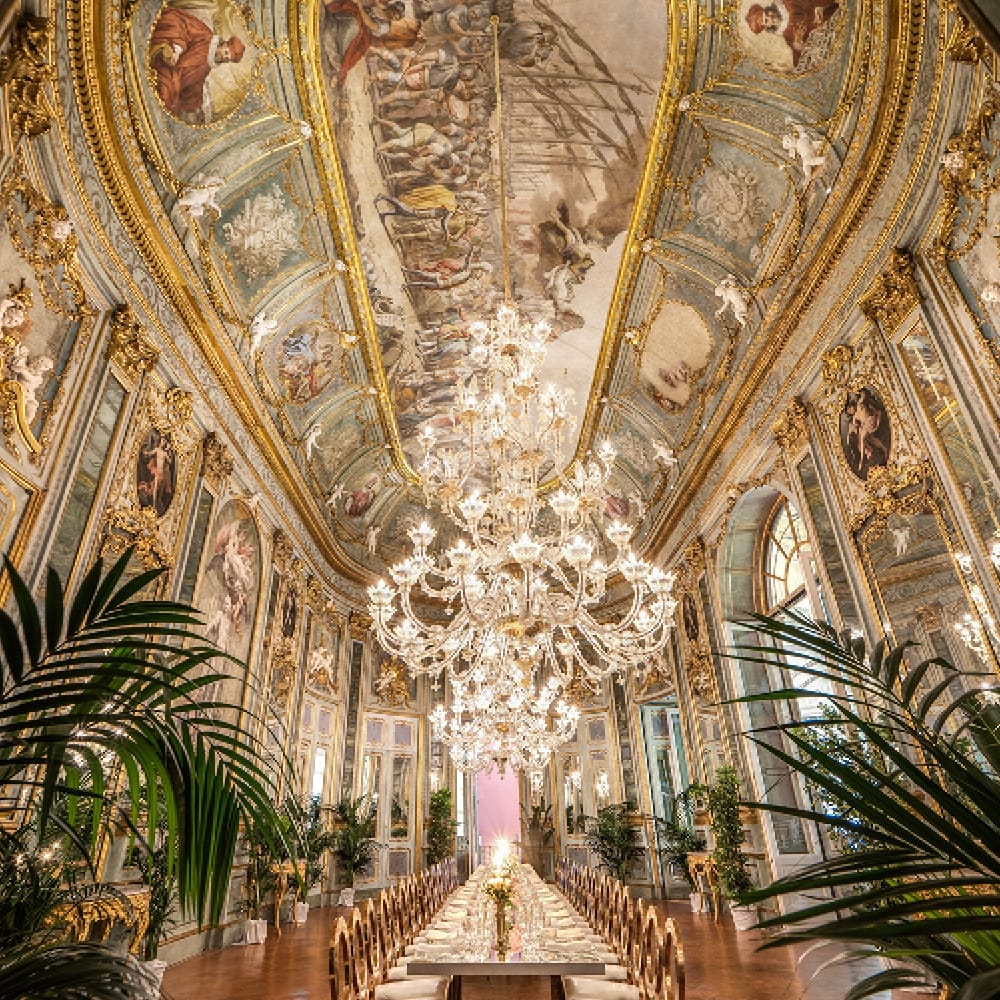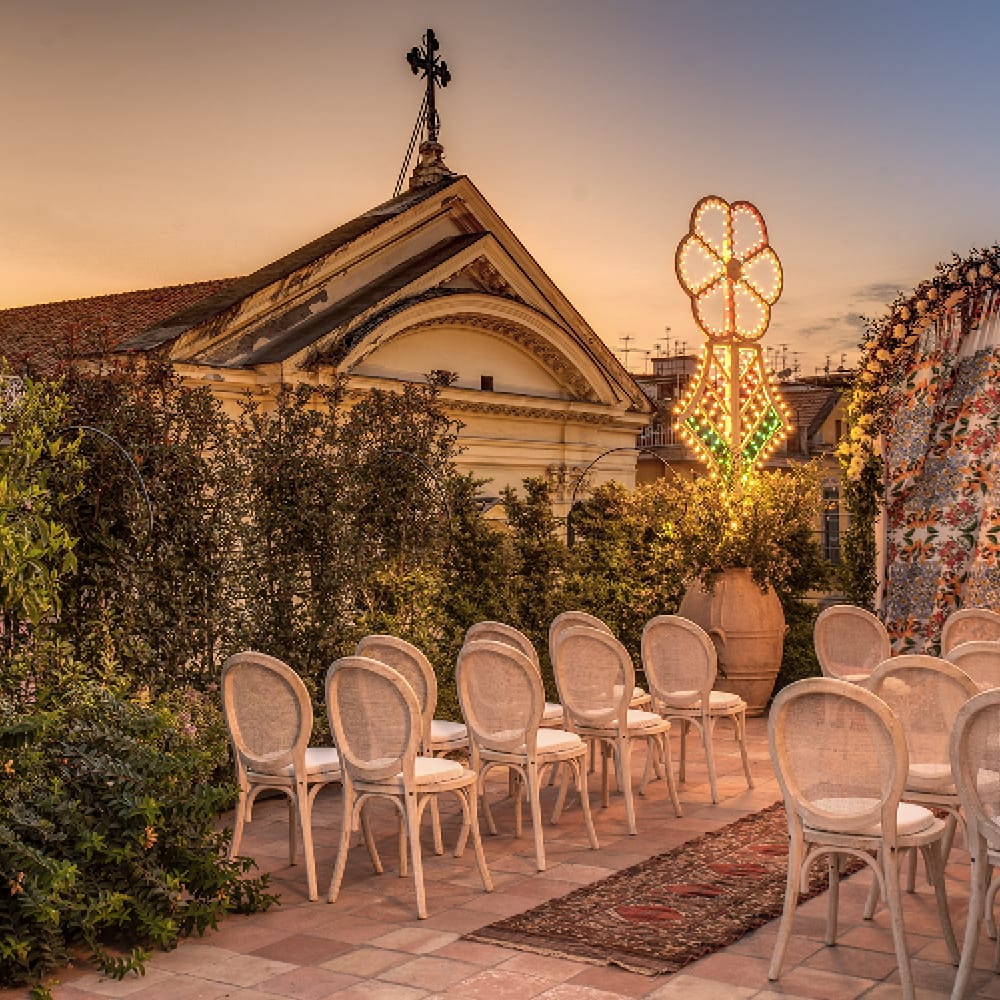The building Doria D’Angri was built upon commission of Prince Marcantonio Doria on the site of two previous 16th century houses. In 1760 the prince died and the continued construction of the Family Palazzo passed on to his son, Giovanni Carlo who entrusted it the old Luigi Vanvitelli. After Vanvitelli’s death in 1773, the project passed first to Ferdinando Fuga, then to Mario Gioffredo and finally to Carlo Vanvitelli, Luigi’s son.In 1860 the palazzo became famous because, on the 7th of September from its main balcony, Giuseppe Garibaldi announced the annexation of the Kingdom of the Two Sicilies to the Kingdom of Italy.In 1940 the collection of Marcantonio Doria kept in the palazzo, which also included a painting by Rubens and Caravaggio’s “Martirio di Sant’Orsola“, was sold at auction. During the Second World War the building suffered some damage, especially on the upper side of the facade, losing six of the eight sculptures that adorned its upper edge, and the noble coat of arms of the Doria family placed above the window of the facade.
“There are two internal courtyards in Doria D’Angri: one hexagonal, conceptually similar to the octagonal one of Palazzo Serra di Cassano, but narrower and higher in shape. In contrast, the other court yard is rectangular. These two open spaces are connected to each other by a passage with vaults, while they, in turn, connect the two respective entrances through long hallways. The whole perspective gives the appearance of an “optical telescope”, an architectural technique typical of Vanvitelli, which can also be found in his other works such as, for example, the gardens of the Royal Palace of Caserta. ”
“Much of the interior is embellished with decorations typical of Naples’ 18th century noble palaces: there are frescoes and canvases by Fedele Fischetti, one of the most active local painters at the time who, with the collaboration of Alessandro Fischetti and Costantino Desiderio, painted the great fresco in the vault of the gallery of the Triumph of Lamba Doria in the battle of Korcula. The Aurora placed in the boudoir is attributed to Desiderio, which also houses the stucco caryatids that were made by the sculptor Angelo Viva. Other eighteenth-century rooms, such as the cabinet of mirrors, whose bedroom houses three paintings by Francesco Solimena and decorations by Girolamo Starace, preserve frescoes by Giacinto Diano, who also worked in the gallery of the second noble quarter. The private chapel on the main floor is decorated with paintings by Giovanni Maria Griffon.Overall, the building has a style that can be placed between the late Baroque and the neoclassical periods. “(Wikipedia)



